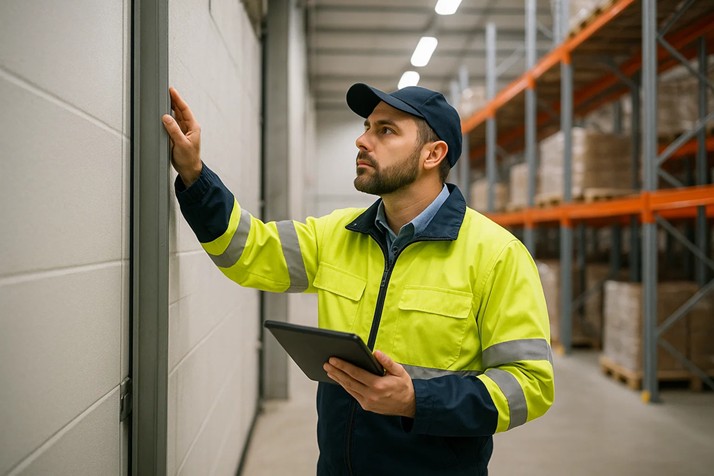Pest control compliance inspection
Comprehensive pest control compliance inspections are essential in ensuring that food safety and hygiene standards are met. These inspections play a pivotal role in identifying, assessing, and managing potential risks associated with pests within the food production environment. The primary goal is to prevent contamination of food products and maintain a clean and hygienic working space.
In the context of food safety, pest control compliance inspections encompass a series of activities designed to meet regulatory requirements set by health authorities such as the Food Standards Agency (FSA) in the UK or the US FDA. These inspections are crucial for maintaining compliance with international standards like ISO 22000 and HACCP principles.
The process involves several key steps: initial inspection, identification of pests, assessment of infestation levels, formulation of control strategies, implementation of preventive measures, and regular monitoring. Compliance inspectors use a variety of tools and methods to ensure thoroughness, including visual inspections, bait stations, traps, and environmental sampling.
For quality managers and compliance officers, the importance of these inspections cannot be overstated. They not only safeguard public health but also protect brand reputation and operational efficiency. By adhering to stringent hygiene protocols, businesses can avoid costly recalls and legal repercussions. The implementation of effective pest control strategies is a cornerstone of food safety management.
The use of advanced technology in pest control compliance inspections is increasingly becoming standard practice. Devices such as ultraviolet traps, pheromone lures, and electronic pest monitors provide real-time data that can be analyzed to refine pest management practices. These technologies not only enhance the accuracy of inspections but also aid in proactive management.
The acceptance criteria for pest control compliance inspections are based on a combination of visual evidence, trapping results, and environmental conditions. The presence of pests within acceptable thresholds is generally considered compliant with health regulations. However, any detected infestation must be promptly addressed through targeted interventions to ensure that the environment remains free from contamination.
| Pest Type | Acceptance Thresholds (Per 100m2) |
|---|---|
| Cockroaches | <3 |
| Flies | <5 |
| Mice | <1 |
The inspection process is iterative, with regular follow-ups to ensure that the environment remains pest-free. This ongoing commitment to hygiene and safety underscores the importance of effective pest control compliance inspections.
Applied Standards
The application of international standards ensures consistency and reliability in pest control compliance inspections. Key standards include ISO 14001 for environmental management systems, which provides a framework for the identification, evaluation, and control of potential risks related to pests. Additionally, HACCP (Hazard Analysis and Critical Control Points) principles are integral to food safety programs, emphasizing preventive measures and continuous monitoring.
Compliance with these standards is not only about adhering to regulations but also about demonstrating a commitment to quality and sustainability. By aligning inspection processes with recognized international guidelines, businesses can ensure that their practices are robust and effective in maintaining high hygiene standards.
Competitive Advantage and Market Impact
- Enhanced reputation: A strong track record of compliance with pest control measures can significantly enhance a company's brand image, attracting customers who prioritize food safety.
- Cost savings: Effective pest management reduces the risk of costly recalls and legal disputes, thereby saving on associated costs.
- Innovation leadership: Companies that invest in advanced technologies for pest control are often at the forefront of innovation, setting benchmarks for industry best practices.
The market impact of robust pest control compliance inspections is profound. By maintaining a clean environment, businesses can ensure consistent product quality and safety, which is crucial in today's competitive food industry. Compliance with stringent standards also positions companies as trusted partners to regulatory bodies, further strengthening their market position.
Use Cases and Application Examples
- Data-Driven Decision Making: Using electronic pest monitors to track infestation levels over time provides valuable insights for strategic planning in pest management.
- Training and Education: Regular inspections serve as an educational tool, helping staff understand the importance of hygiene practices and the steps involved in maintaining a pest-free environment.
The following table illustrates various scenarios where pest control compliance inspections are critical:
| Situation | Pest Control Measures |
|---|---|
| New facility commissioning | Initial comprehensive inspection and setup of monitoring devices |
| Post-repair or renovation | Thorough inspection to ensure no new pest entry points are created |
| Seasonal changes | Increased vigilance during peak pest activity periods |
The application of these measures ensures that businesses maintain a high standard of food safety and hygiene, thereby protecting consumer health and upholding industry reputation.





